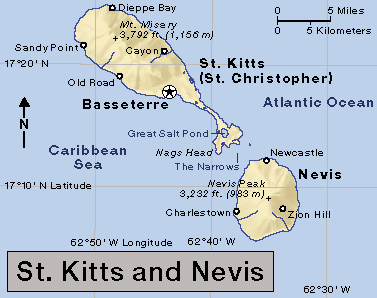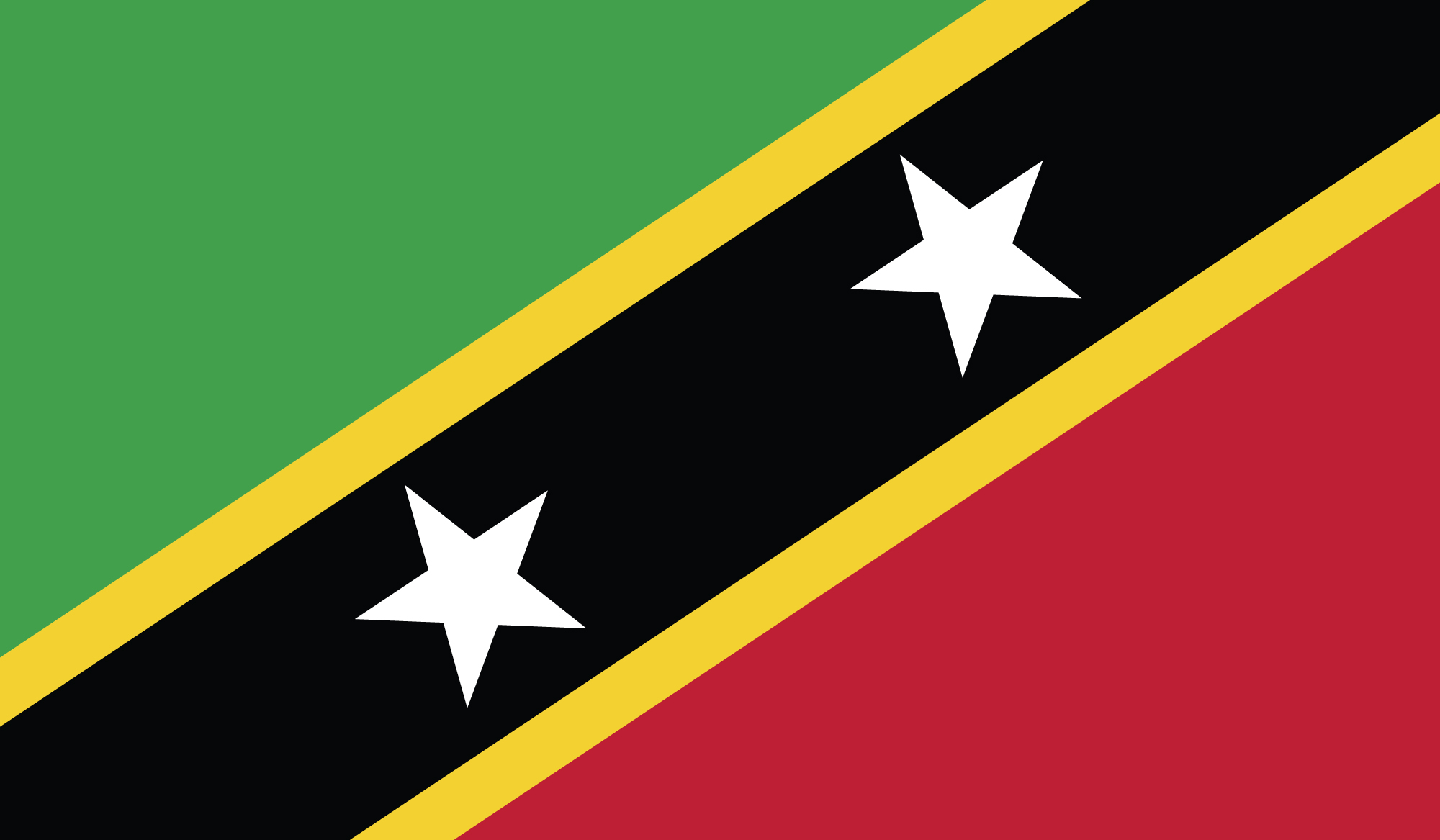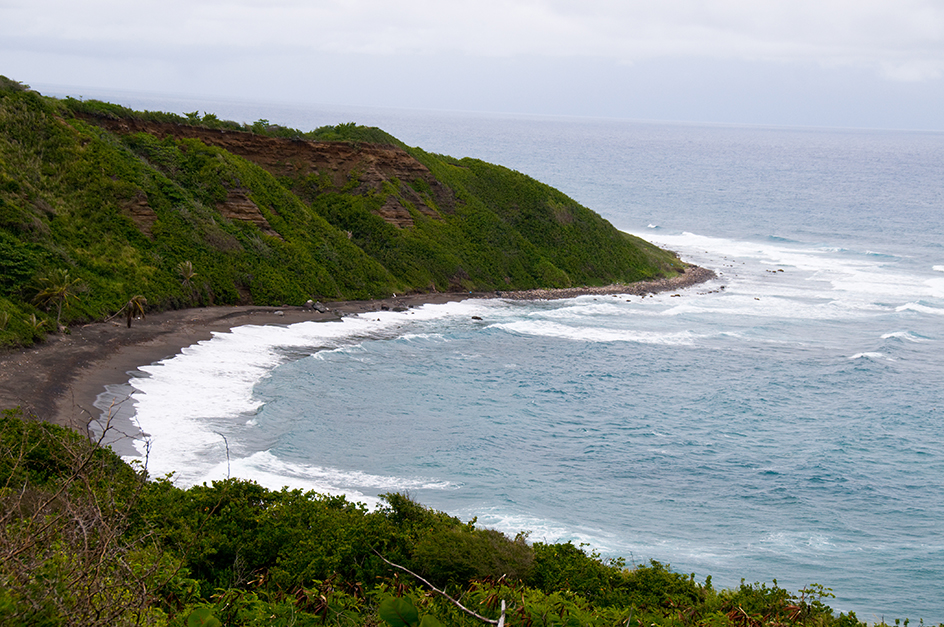Saint Kitts and Nevis << NEE vuhs or NEHV uhs >> is a country in the Caribbean Sea that consists of two islands. The islands are St. Kitts (sometimes called St. Christopher) and Nevis. The islands are about 2 miles (3.2 kilometers) apart from each other. They lie approximately 190 miles (310 kilometers) east of Puerto Rico. The country has a land area of 101 square miles (261 square kilometers). St. Kitts covers 65 square miles (168 square kilometers), and Nevis covers 36 square miles (93 square kilometers). St. Kitts and Nevis has a population of about 54,000. Approximately 80 percent of the people live on St. Kitts.

Britain (now called the United Kingdom) controlled St. Kitts and Nevis from 1713 to 1983, when the islands became an independent nation. Basseterre, on St. Kitts, is the nation’s capital and largest city. About 11,500 people live in Basseterre. The East Caribbean dollar is the basic unit of currency.
Government.
St. Kitts and Nevis is a constitutional monarchy. The British monarch serves as the chief of state. A prime minister serves as the actual head of government. The prime minister governs with the aid of a Cabinet. A one-house parliament makes the country’s laws. It includes representatives elected by the people and senators appointed by government officials. The head of the political party with the most seats in the parliament usually serves as prime minister. Nevis also has its own local legislature. Nevis has the right to secede and become an independent country.

People.
Nearly all the people of St. Kitts and Nevis are descendants of Africans who were brought to the islands by British settlers and enslaved on sugar plantations. The people speak English, the official language. About two-thirds of the people live in rural villages scattered along the coasts. Most of the rural people work on small farms or large coconut farms. Most of the rest of the people live in urban areas. Basseterre is the chief urban center. Charlestown is the main urban center of Nevis. Children must attend school from the ages of 5 to 17.
Land and climate.
St. Kitts and Nevis are formed by the tops of volcanic peaks that rise out of the Caribbean Sea. The peak that forms much of St. Kitts is called Mount Misery. It rises 3,792 feet (1,156 meters) above sea level. The peak of Nevis is 3,232 feet (985 meters) above sea level. Both islands have rolling landscapes with fertile, narrow plains along the coasts. Many of the beaches have black volcanic sand. The annual rainfall is about 55 inches (140 centimeters). The average temperature is 78 °F (25 °C).

Economy.
The economy of St. Kitts and Nevis is based mainly on tourism. The islands’ beaches, scenery, and warm, sunny climate attract hundreds of thousands of tourists annually. The country’s economy was based largely on sugar production until 2005. That year, the government closed down the sugar industry because of significant financial losses. Today, the principal manufactured goods of St. Kitts and Nevis include beverages, clothing, electronics, and footwear. The country grows coconuts, fruits, and vegetables. St. Kitts and Nevis imports much more than it exports. Its main trading partner is the United States. St. Kitts has an international airport. Ferryboats and small planes carry people between the two islands.
History.
Indigenous (native) peoples lived on St. Kitts and Nevis before Europeans settled there. Arawak people were the islands’ first inhabitants, followed by Carib people. The Genoese navigator Christopher Columbus sighted the islands in 1493 on his second voyage to America. The British began settling on St. Kitts in 1623. French settlers soon followed. The British first settled on Nevis in 1628.
Britain took complete control of St. Kitts in 1713. The British later ruled St. Kitts and Nevis, along with the island of Anguilla, as a single colony. In 1967, the colony became an associated state of Britain. Anguilla became a separate British dependency in 1980. St. Kitts and Nevis became an independent nation on Sept. 19, 1983. In 1998, voters on Nevis narrowly defeated a referendum (public vote on an issue) that would have made the island independent from St. Kitts.
See also Anguilla; Basseterre; Leeward Islands.
